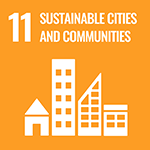Project for Evaluation and Mitigation of Seismic Risk for Composite Masonry Buildings in Bhutan
Principal Investigator


Director
Department of Culture (DOC), Ministry of Home and Cultural Affairs
Nagtsho Dorji
ODA Recipient Country
Kingdom of Bhutan
Research Institutions in Japan
Nagoya City University / Kyoto University / Kagawa University / Tohoku University / Nihon University
Research Institutions in Counterpart Country
Department of Culture (DOC), Department of Disaster Management (DDM), Ministry of Home and Cultural Affairs / Department of Engineering Services (DES), Ministry of Works and Human Settlement / Department of Geology and Mines (DGM), Ministry of Economic Affairs
Adoption fiscal year
FY 2016
Research Period
5 Years
Overview of the Research Project
Preparing for future earthquakes by developing and spreading earthquake risk evaluation and aseismic protection techniques
In Bhutan, most residential and public facilities are made of rammed earth* and stone masonry except for some reinforced concrete buildings up to five stories high and brick buildings up to two stories seen in the capital and other larger cities. The project aims to support the development of a quake-resistant community through the development of an aseismic protection policy obtained by a seismological research in Bhutan to make traditional Bhutanese masonry buildings earthquake resistant. This scope will be realized by producing a manual for disaster mitigation education taking into consideration the results of earthquake hazard evaluation, and by holding seminars for engineers and construction builders as well as local residents.
* Rammed earth is a technique for constructing walls by filling earth material into a supported wooden frame and then ramming and compressing until it hardens.
Contribute to building safe and secure communities through the development of technologies for disaster mitigation in Bhutan.
Contribute to raising people’s awareness of disaster prevention by proposing the development and implementation of an aseismic protection policy based on full-scale experiments and a disaster mitigation education manual for Bhutan’s government agencies responsible for disaster management. The technologies to be developed through this project may be applied in other countries as a model for overcoming the risks of disasters due to seismic vulnerability of traditional buildings made of earth and stones.
Photo gallery
Research Project Web site
Press Release
Links
Projects
Contact Us
Japan Science and Technology Agency (JST)
Department of International Affairs
SATREPS Group
TEL : +81-3-5214-8085
Related articles by Category
- Disaster Prevention and Mitigation
Disaster Prevention and Mitigation

 Kingdom of Tonga
Kingdom of Tonga
Volcanic island nations working together to reduce the risk of eruption and tsunami disasters!
Disaster Risk Reduction of Widespread Volcanic Hazards in Southwest Pacific Countries
- Bhutan
Disaster Prevention and Mitigation

 Kingdom of Bhutan
Kingdom of Bhutan
Protecting the Land of Happiness from Glacial Lake Outbursts: A Disaster Resulting from Climate Change
Study on GLOFs (Glacial Lake Outburst Floods) in the Bhutan Himalayas
- Asia
Environment / Energy
(Global-scale environmental issues)
 Kingdom of Thailand
Kingdom of Thailand
“Natural rubber seeds”, the unlimited potential hiding in natural rubber plantations
Utilization Technology of Rubber Seeds for Green Products to Mitigate Global Warming and Plastic Pollution
- SDGs : Goal.11
Disaster Prevention and Mitigation

 Republic of El Salvador
Republic of El Salvador
Protecting international port cities from compound disasters with dominostyle chains of destruction!
Compound Disaster Risk Reduction associated with Large Earthquakes and Tsunamis





















